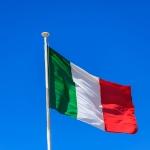New scenarios for food&beverage in Italy
According to a Fipe-Confcommercio Report, in 2017 food&beverage spending in Italy was approximately 83 billion Euros, with a real increase of 3% over the previous year. The impact of the crisis on home food consumption (-10.5%, equal to a decrease of € 15.9 billion Euros between 2007 and 2016) has caused a significant increase of the restaurant’s food consumption, reinforcing the belief that Italians are people who like to eat out of home. In fact, about 36% of the Italian total food consumption trend is outside home, with a moderate but steady growth.
According to the latest findings, in the archives of the Italian Chambers of Commerce are active about 330.00,00 catering businesses. Lombardia is the first region for number of companies in the sector, with a share of 15.4%, followed by Lazio (10.9%) and Campania (9.5%). The network of public exercises is therefore wide and articulated on the whole national territory.
In Europe, food&beverage industry is worth 1.522 billion Euros, 63.1% in the domestic channel and the remaining 36.9% in catering. But among the Countries, variability is significant. In Germany, catering accounts for less than 30% of total food consumption, 47.6% in the United Kingdom, 53.6% in Spain and even 59% in Ireland. In Italy the share stands at 35%, six percentage points above France. In terms of absolute values, Italy is the third catering market in Europe, after UK and Spain.
In Italy, over 39 million people consume meals outside home as follows:
- 13 million heavy consumers, meaning those who consume 4-5 meals away from home per week; mostly men aged between 35 and 44 and residing in North-West Italy;
- 7 million average consumers, meaning those who consume at least 2-3 meals away from home per week; mainly men aged between 18 and 24 and residing in central Italy;
- 5 million low consumers, who eat meals outside home 2-3 times a month; they are predominantly women over the age of 64, residing in Northern Italy.
63.8% of Italians eat breakfast outside home with a different intensity: 5.8 million at least 3 or 4 times a week, while for over 5 million it is a daily ritual. The bar/café is the place for breakfast par excellence, without any distinction of gender, age and geographical area. The average cost for breakfast outside home is between 2 and 3 Euros.
Moving on to lunch, 67.1% of Italians, equal to about 34 million people, have lunch outside home during the week; for 12.7 million people it is a usual occasion, at least 3-4 times a week. The expenditure during the week is mainly concentrated in the 5-10 Euro band (48.7%).
As for dinner, 60.9% of Italians have at least one dinner away from home per month. The price range for a typical dinner is between 10 and 20 Euros, even if more than a third of Italians reserve a single dinner from 21 to 30 Euros.
The main criteria for choosing where to eat outside home are: quality of food (50%), proximity to the workplace (30%), speed of service and attention to the wallet (10%).
The relationship between shopping and catering is stronger than ever and the growth recorded by food & beverage in recent years, particularly in shopping centers, is remarkable. This trend will last for the future as the offer of a high quality restaurant is now a critical success factor for the main shopping destinations. An increasing number of structures are incorporating formats that combine the shopping experience with the consumer experience and with entertainment, intercepting the growing number of consumers towards the gastronomic culture. The increase in the supply of restaurant services within shopping centers is clearly driven by the rapid growth in consumption outside home.
According to the research, food&beverage spending outside home in Italy will continue to grow in the next decade, hand in hand with the propensity of consumers to enrich their shopping experience with moments of sociability and leisure.
Avv. Valerio Pandolfini
For other in-depth articles on issues relating to franchising: visit our blog.
The information contained in this article is of a general nature and is not to be considered an exhaustive examination of the various issues, nor is it intended to express an opinion or provide legal advice. Specific legal advice must be provided with regard to individual cases.



